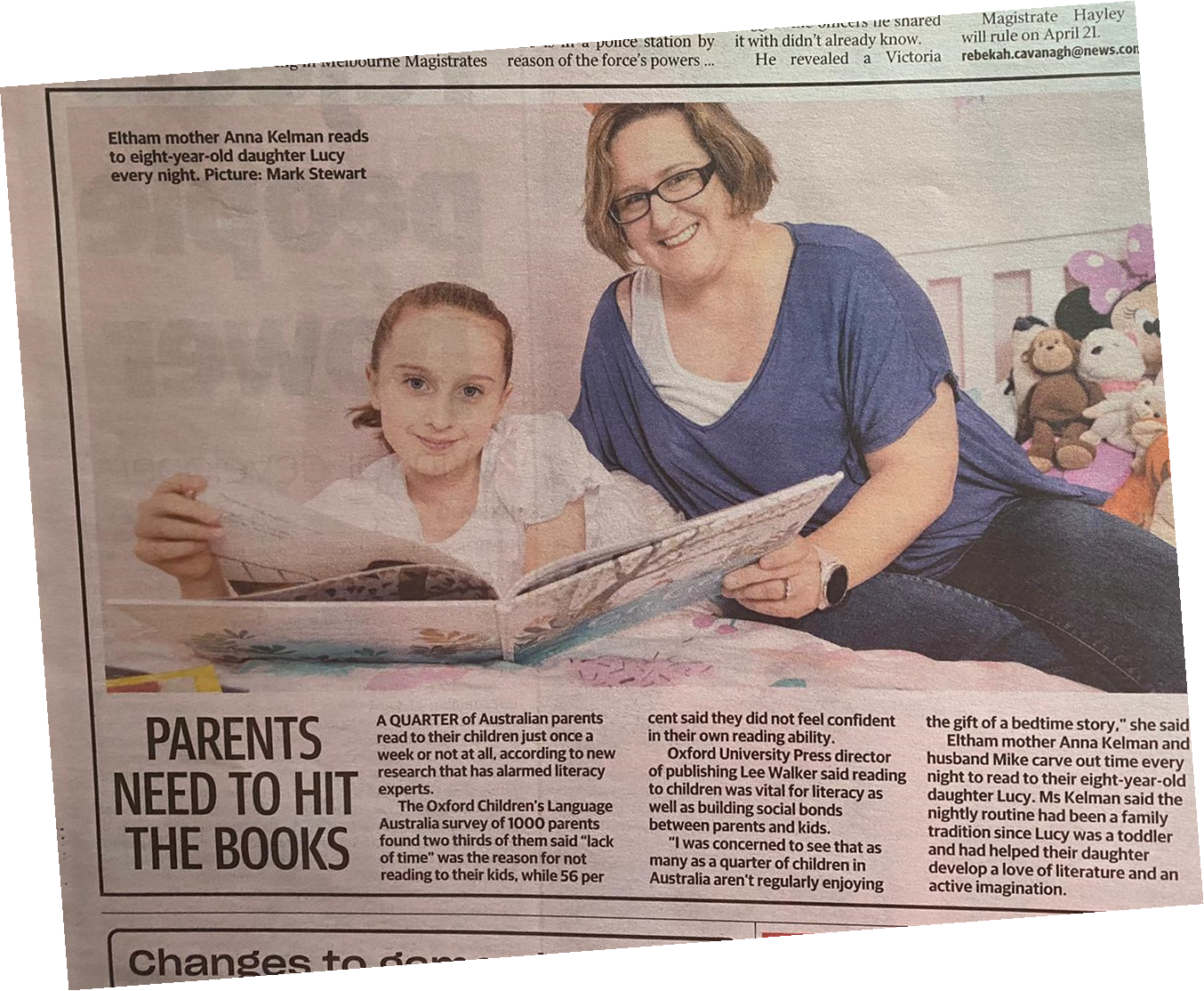
Literacy News
Classroom Helpers
Thanks to all the wonderful parents and carers who attended the Classroom Helper session a few weeks ago, or who have met with me since then to find out about helping during literacy time. If class teachers haven’t yet been in touch with you to organise times, they will be soon. It was fantastic to have so many volunteers and we are really excited to be able to have parents on site to help in these important roles.
Reading with Your Children
The results of a recent Oxford Children’s Language Australia survey have just been released, with some surprising results. In particular, the study revealed that a quarter of parents read to their children only once a week or not at all.
Reading to children is important in so many ways. It shows that reading is a valuable and worthwhile skill and it exposes children to new vocabulary and varied sentence structures that help with oral and written language development. It opens up new worlds, whether it’s exploring favourite topics, such as dinosaurs or tornadoes, or entering the land of the imagination. Most critically, it can provide time and space to build shared experiences and close relationships with children.
An article in the Herald Sun today (31/3) about the study features one of our students, Lucy Kelman, and her mum Anna. I’ve included it below so you can find out more about the research and see how reading fits into Lucy and Anna’s routine!
I also worked with Oxford University Press recently to produce a series of Reading at Home tips for parents. Hopefully there will be something in the list that you can use at home.
Tips for Reading At Home
- Find books you both enjoy – If you’ve read a book that you both love, read it again! Running short of time? Let your child choose the book they want you to read.
- You can find things to read everywhere, not just in bookshops – Try local libraries, op shops or markets. Friends and family are often keen to share their books too!
- Don’t think books are the only thing to read … you can read anything together, including the shopping list, road signs when you’re in the car, and posters in shop. Or explore some audiobooks or podcasts at home or on the go.
- Set aside a regular reading time that works with your life – Make it a habit that you both look forward to and finish every day with a story before bed.
- Enlist the help of brothers and sisters – If your day gets too busy, siblings might like to read together! Ask them to tell you all about what they have read.
- Ensure you’re pitch perfect – Before reading, practise reading the book, so you know the story line and the expression required. Find any tricky words that you might need to explain to your child.
- Remember to read slowly – take your time and make it interesting to listen to. Encourage your child to join in too.
- Judge a book by its cover – Look at the cover of the book together and have your child guess what it is going to be about. What is the book called? What can you see in the pictures? Talk about the book as you read.
- Discuss the stories together – When you’ve finished the book (or a page or a chapter or whatever you are reading), talk about it together… who were your favourite characters, what happened, what was the ending like? This talk can happen while you’re doing other things, such as getting dinner ready, or driving to footy practice.
- Reading together can happen anywhere – The living room floor, the back veranda, or the kitchen table all make great reading spots. Take photos and make a book together of the funniest or strangest places you can find for reading time.
Next term, I’ll share some information about our home reading program, and some ideas for supporting your child to read. But for now, have a relaxing break when it comes, and look for opportunities to enjoy reading to or with your family.
Warm regards
Annie Facchinetti
Literacy Leader and Teaching & Learning Leader
Appeared in Herald Sun - March 31st.

